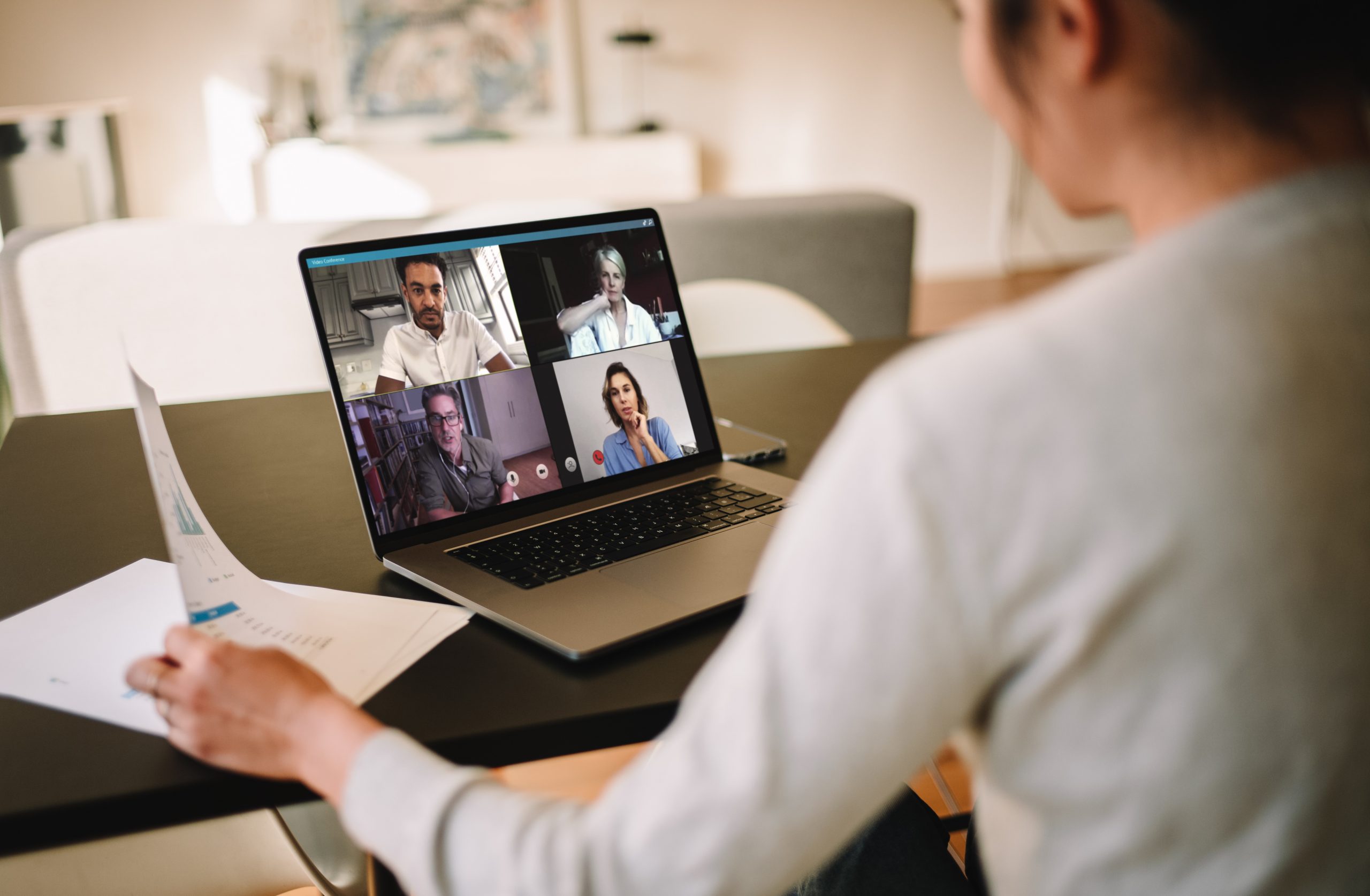Whether it’s new sanitation policies or social distancing requirements, organizations are actively preparing for the return of at least part of their workforce. But given the rise of anxieties amidst COVID-19, how are business leaders building trust with their employees?
Trust is essential for business continuity. Initially, to ensure employees feel safe enough to come back to the office. Longer term, to maintain productivity and company culture which in turn fuels collaboration and innovation.
We convened a powerhouse panel of workplace experts from Siemens, Leesman, HOK, and the Interdisciplinary Center for Healthy Workplaces to hear their perspectives. Here are a few key takeaways from our conversation.
Preparing the workplace for re-entry will be easy. Preparing the people will be harder.
To meet social distancing and density requirements, not everyone will return to the office at once. But as Cristina Banks of the Interdisciplinary Center for Healthy Workplaces notes, leaders can’t assume that just because offices are open, people will feel comfortable returning. She urges leaders to remember that “for older workers and those with complicating medical conditions, there are real risks associated with returning to the workplace.” Some may be ready, willing, and able to return immediately, while others may be more comfortable working from home indefinitely.
Part of the “trust equation,” says Tim Oldman of Leesman, “is that the first wave of people invited back to the office are the people who need it most.” Instead of guessing how workers want to return to the workplace (or not), leaders should take one simple-yet-radical step: Ask employees what they want. All panelists agreed that employers should create open feedback loops with employees, taking personal preferences into account.
That means leaders should stagger returns based on the employee function, the value of in-person collaboration in that role, and the employee’s unique circumstances. Someone with a private home office, for example, may be more willing to delay their return to the workplace than someone with multiple roommates.
The more employers can involve employees in the decision-making process — “making them co-creators of the New Normal,” as Franziska Dolak of Siemens suggests — the more employees will trust that decisions are being made fairly.
Explore new ways to create the “virtual water cooler”
Workers everywhere are suffering a loss of collaboration, community, and learning. The “social glue” of the office watercooler, the casual lunch, or the few minutes after a meeting can’t be underestimated.
But as we’ve all experienced by now, virtual happy hours can feel forced and awkward. After a long day of work, few want to spend more time on their screens to socialize with colleagues.
So how can employers create space for serendipitous encounters and connection? It depends, as what works for one team or company’s culture might not stick with another. “We need to create meaningful experiences for people that motivate and inspire us, while also keeping us safe,” remarks Franziska Dolak. Come-and-go office hours, virtual team lunches, or optional “fun” calls, like a Zoom with an alpaca farm, can be effective, as can purposely checking in with individuals outside your team. The key is to keep trying new avenues for connection until you find something that works.
While the global “WFH Experiment” has largely been a success, with most employers experiencing near-normal levels of productivity even amidst drastic change, panelists agree that working remotely isn’t working for everyone. Working parents, caregivers, and employees living in smaller, shared spaces are just some of the groups suffering from a lack of connection. Younger employees, Tim Oldman, notes, report a loss of learning and feel like their careers are stalled. To help build trust, employers must show empathy for these diverse employee experiences. “Not overgeneralizing, and recognizing that people have different experiences,” Adam Stolz notes, “is key to empathetic, effective communication.”
Companies must be vocal about the actions they’re taking.
“People perceive spaces as either safe or unsafe,” notes Cristina Banks of the Interdisciplinary Center for Healthy Workplace. If employers want their people to come back to work and be able to concentrate, “[they] need to make the actions that leadership is taking obvious. That’s how you build trust, empathy, and caring.”
Access to information, panelists noted, can also reduce anxiety and build trust. Workplace experience apps like Comfy can help employees easily navigate new spatial configurations, procedures and policies of the post-COVID office by giving access to things like cleaning schedules, staggered start times, or finding coworkers’ assigned socially distanced workstations.
Since there won’t be a single, government-defined moment when everything is considered “safe,” observes Adam Stolz, companies will need to create their own return-to-workplace roadmaps and be willing to iterate in response to new data. They’ll need to answer questions like “How will we use evidence to decide when restrictions are no longer necessary?”
Employees need to know that their leaders are making data-backed decisions with their best interests in mind — not just the interests of the company’s bottom line. Companies must publicize the suite of actions they’re taking, including enforced social distancing, staggered start times, or monitoring employee temperatures, to convince employees that the workplace is safe.
Leaders need to communicate the “why,” not just the “what”
In uncertain times, transparency can be the difference between organizations that maintain trust and those that lose it. According to Adam Stolz of HOK, “Communicating the process of exploring solutions to a problem is just as important as communicating the solution itself.”
It’s okay if leaders don’t have everything figured out, as long as they’re in continuous communication with their employees about what’s being done. In fact, leaders sharing their own uncertainty can be a strength, not a weakness. As noted by Erica Eaton of Comfy, if employees are questioning why their leaders are making a particular decision, that indicates trust is already at risk.
Employees may lower their privacy expectations in exchange for increased safety
Tim Oldman of Leesman notes that in Europe, “employees are increasingly looking for organizations with intelligent infrastructures.” He predicts a “massive wave of public understanding of what connected, data-based decision making looks like if you slightly lower your privacy concerns about your employer knowing exactly where you are.
For the first time, employees may be willing to share exactly where they are in the office in exchange for improved public safety. “You want to know where your Uber delivery is within a certain number of meters,” Oldman notes, “so you want to know where your nearest infection potential is.”
Companies will need to understand the value of the physical workplace
In an uncertain real estate market, companies will need to build a better business case for the physical workplace. “Often, people’s productivity and wellbeing in the workplace is considered an intangible asset, so it doesn’t have the priority that something like investing IT does,” notes Franziska Dolak of Siemens. Tim Oldman agrees, lamenting that “we don’t understand what the ROI of a great workplace really is.”
That means companies should invest in understanding how they already use their space, says Adam Holz of HOK, “because the dollar return will be exponential.” Companies will need to invest in space analytics technology to understand how employees are using the office space, now and in the future. Real estate leaders will need real-time data and insights to inform decisions and quickly make adjustments to the existing workplace re-entry program.
As Cristina Banks observes, this is a new opportunity to rethink how we measure real estate value, focusing on people and not just square footage. Research shows that “the pathway to productivity is through health and wellbeing, which is influenced by a person’s physical environment.” The more productivity data real estate leaders can collect, the better equipped they’ll be to create safe and productive workplaces for employees.
___
For more COVID-19 workplace insights, explore Comfy's Return to Workplace Playbook and our new Safe Workplace solution.

 Request a Demo
Request a Demo






